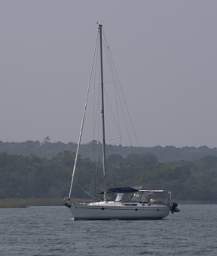
I did a last-minute modification to the dinghy, gluing on a wear patch where it rubbed against the davits, plus a lifting eye to tie it up to the davits if necessary. Then I tried to pull the main halyard with the bee rag on it back down inside the mast. It wouldn't budge, and that was a mistake. The rag tore and is now up in the mast somewhere. I should have pulled it out the top and down the outside, which is what I ended up having to do anyway. I didn't do that originally because the sentinel wasn't long enough, and I was too lazy to add to it and make it longer. Big mistake... So now I have a pesticide soaked rag up inside the mast. At least the bees will stay away...
I started the engine thinking I might need it in the tight confines of the bay, but I ended up not needing it to sail out. When I left Bahia de Buena Vista it was about 15:00. I didn't have time to make it all the way to Fronteras, so I figured I would sail up the Golfete and spend the night behind the Pigeon Cays.
When I turned into the wind at Pigeon Cays and dropped the hook, I had a bit of a fiasco. I had to let the chain run and then scurry back to the helm to keep the boat pointed into the wind. When I got back the chain was running out fast and I had a heck of a time getting it under control. Luckily I had good gloves on and didn't mess up my hands. A half hour later I discovered my watch was missing; I guess the chain caught on it and ripped it off. I went up to the bow and by some lucky break it was still on the deck by the chain pipe.
 |
| Sailboat Heading Down to Livingston |
The next day I sailed on up to Fronteras and anchored. It was a slow, hot sail up, but it gave me time to enjoy the scenery -- egrets in the trees on shore, locals paddling their cayucos on their way somewhere.
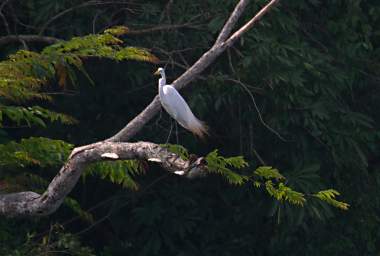 |
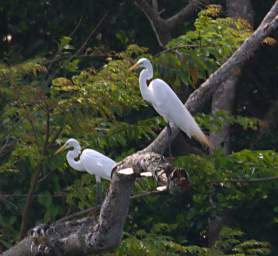 |
| Egret | Egret |
 |
 |
| Palapa | Local Cayuco |
The swallows kept me company. They would hang out on the end of the anchor stock, or on the lifeline.
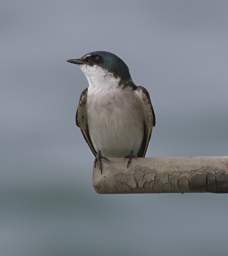 |
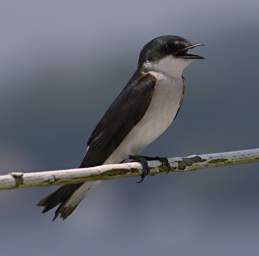 |
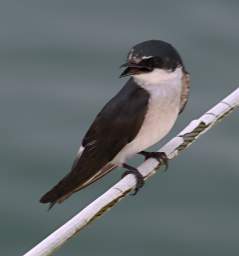 |
| Swallow | Swallow | Swallow |
Most days there is a steady stream of water-taxis, known as collectivos, running from the town of Fronteras up to Castillo de San Felipe at the mouth of Lake Izabal, and then down to Livingston. I presume they are called collectivos because they collect people from all over, and deliver you to just about anywhere. They have a more-or-less set route, but will deviate from it if they get a phone call for a passenger pick-up. I always have them drop me right at my boat; they come alongside, I throw my gear onto Malakii, and then hop aboard. You could call it curbside delivery. On nice days during holidays or tourist season, they do a brisk business; other times they have to work pretty hard for any passengers.
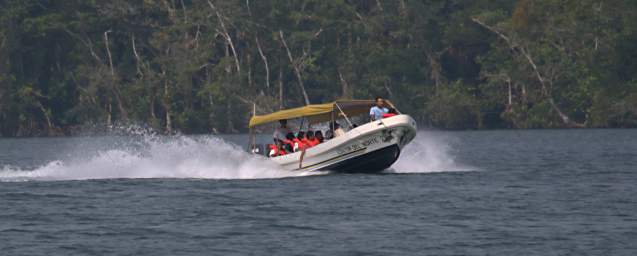 |
| Collectivo |
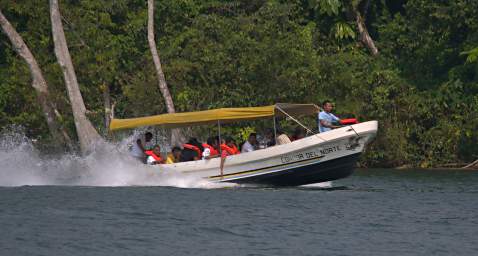 |
| Collectivo |
I was flying wing-and-wing, and as I was nearing Fronteras I saw Jennifer heading back down the river. She had gone up to two days earlier for the AAA Juba. I waved and yelled, but she didn't see or recognize me or Malakii. When she leaves town and heads home, she is a woman with a mission!
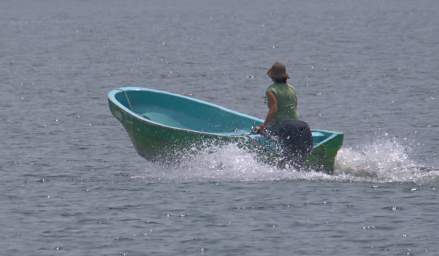 |
| Jennifer Going Home |
I ran errands, then tied the dink on a mangrove on the island in the middle of the river and tried to take some pictures of flying egrets and cormorants.
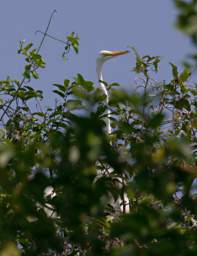 |
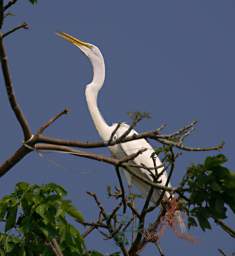 |
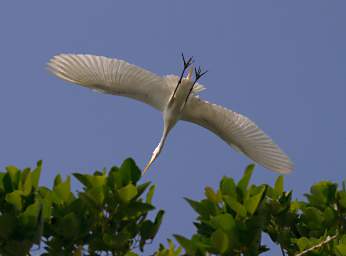 |
| Egret | Egret | Egret |
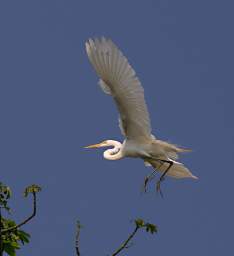 |
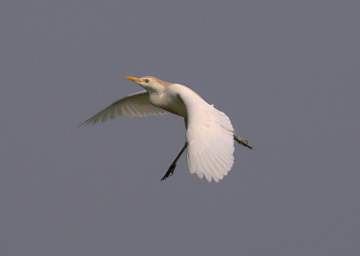 |
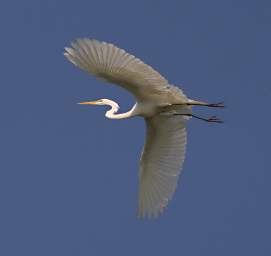 |
| Egret | Egret | Egret |
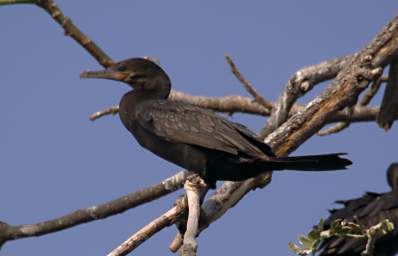 |
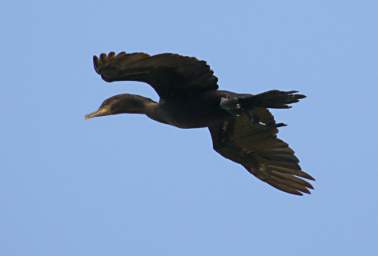 |
| Cormorant | Cormorant |
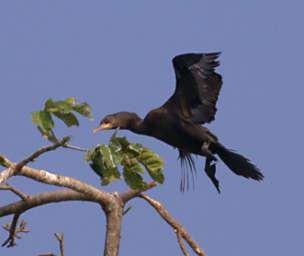 |
 |
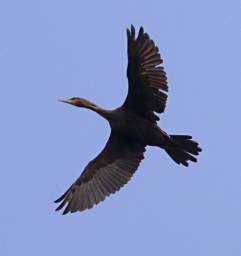 |
| Cormorant | Cormorant | Cormorant |
 |
| Vulture |
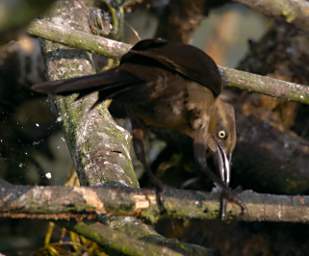 |
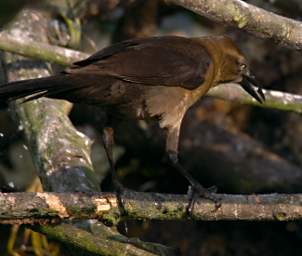 |
| Bird Xxx | Bird Xxx |
I had dinner at Bruno's, then retired to the boat. The carnival was in town, and there was quite a fireworks show that evening.
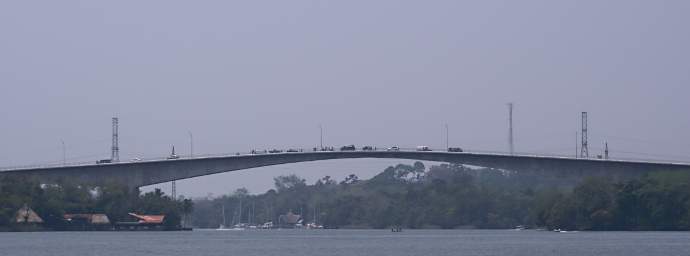 |
| Bridge |
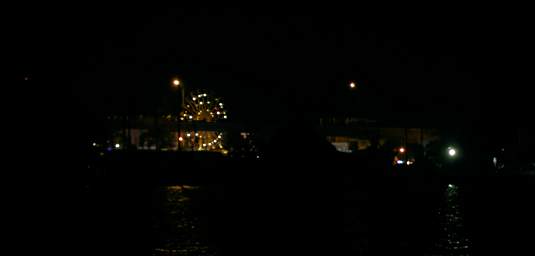 |
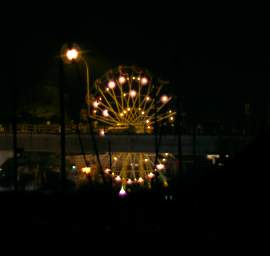 |
| Fronteras Fireworks | Fronteras Fireworks |
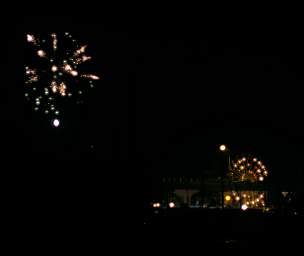 |
 |
| Fronteras Fireworks | Fronteras Fireworks |
 |
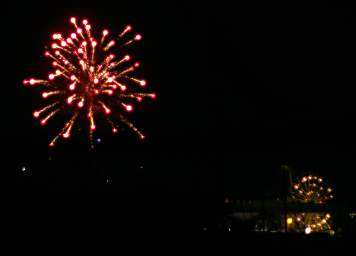 |
| Fronteras Fireworks | Fronteras Fireworks |
 |
 |
| Fronteras Fireworks | Fronteras Fireworks |
It was hot, sweaty, and sticky in town. I discovered my camera viewfinder is impossible to use with polaroid sunglasses on, a real pain in the neck. Ugh. And the same goes for the LCD screen on the back. I couldn't get out of there soon enough, but decided I needed to get oil so I could change the oil in the engine.
That evening, when I put the outboard up on the mount on the stern pulpit, the mount disintegrated. It's wood, and had just worn out. By this time I was so used to things going wrong it didn't really have much of an effect. I had noticed that it needed replacing a few days earlier. I stowed the outboard in the cockpit locker and made a mental note to fix it. The next morning I rowed in to Brunos around 07:00 but had to wait until 08:00 for Agromar to open so I could buy oil. Then I changed the oil, took the used oil and garbage in to Brunos, paid them for the trash service, and got ready to sail back "home."
As I was getting ready to leave, I stepped on one of the jam cleats for the traveler and badly lacerated the bottom of my right foot. Hydrogen peroxide and bandaids, and I was sailing out in a tiny hint of wind. After an hour I was only about a mile down the river, so I started the engine. Ten minutes later I had wind, and I sailed the rest of the way down to Jennifer's. On the way I got a couple of surprises, one in the river and two on the Golfete. I thought I knew the water pretty well, but on those occasions it got shallower sooner than I expected. On one of those occasions I could see a guy fishing and it looked "reefish" in the water around him. The depth went to 5.6 but I didn't touch. Whew. Maybe because I was heeled; maybe because I was not fully loaded; or maybe because we really only draw 5'6" or so.
Catching my mooring was a bit tricky; I dropped the jib early, which was good. Then I eased up on the main and dropped it, and then turned head to wind to the mooring. It was tight maneuvering between the other boats and I had the engine running in case I screwed up, but I didn't need it.
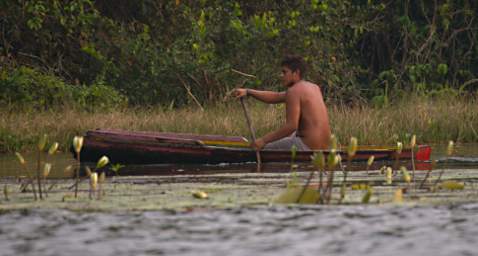 |
| Local Cayuco |
The next morning the banana I had for breakfast was like punky wood inside. I fed it to the fish and they liked it.
That evening there was outstanding bioluminescence in the water, and lightning bugs flying around.
The next morning I went over to Casey's and made a new mount for the outboard, then helped him with a hard dodger he was replacing on a boat.
I took the dink and drifted down to the creek next to Jennifer's, Creeki Blanco, and took a few photos.
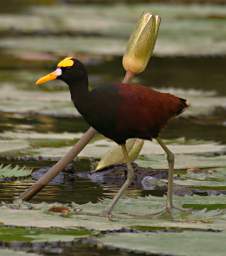 |
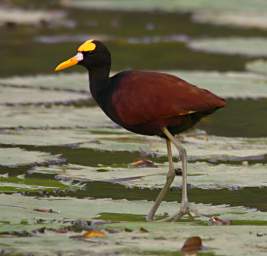 |
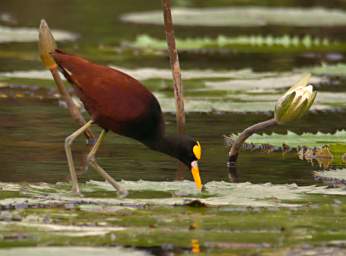 |
| Northern Jacana | Northern Jacana | Northern Jacana |
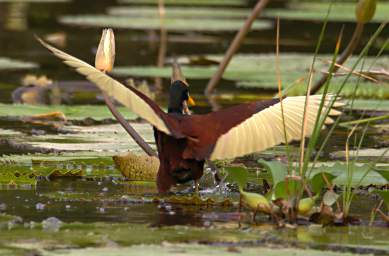 |
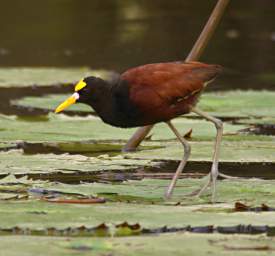 |
| Northern Jacana | Northern Jacana |
I don't know what this flower is; it looks kind of like an iris to me. But it sure was pretty.
 |
| Flower Xxx |
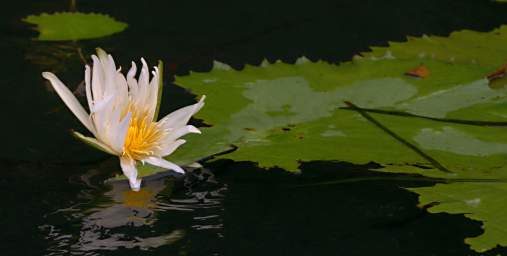 |
| Water Lily |
The next morning it was time to head out if I was ever going to do it. I dropped the mooring and tried to sail out, but the slight breeze there was totally died. I started the motor and motored out of the bay, then turned off the engine and sailed on down the lake and into the river.
As I headed down the river, I took stock of my situation. A lot of niggly things had gone wrong, but fundamentally we were ok. The main and #2 jib were in ok shape, but the storm jib wasn't -- that was my biggest concern. The batteries were a concern, but the frig was the big electrictity gobbler and I didn't need it that badly. The running lights were all low-draw l.e.d.s but the auto-pilot took more. This was a sailboat, not a motorboat, and I had ten years of experience sailing more or less without the engine. The dink motor was running rough but again, it wasn't a necessity. I figured for a short sail of a few weeks in Belize I was fine.
The wind was weak as I entered the canyon but I still made progress. The liesurely pace allowed me time to take pictures and enjoy the nature of the place. About half way down the canyon, the wind died completely. Malakii was headed towards the bank, as usual, since sailing down the canyon usually involves a lot of tacking. I put the wheel hard over to turn us back into the middle of the river, but not much was happening. I looked up ahead and there were some trees overhanging the bank, and the current was pushing us that way. I decided it would be wise to start the engine.
I put the key in the ignition, warmed up the injectors, and hit the starter button. Nothing happened. Nada. It didn't turn over. It didn't click. It was as if it wasn't connected. Immediately I went into full alert, as we were approaching the bank with overhanging trees. The wheel was hard over and all I could do was hope for some wind. I saw a slight puff fill the top of the sail, and slowly, ever so slowly, the bow turned out towards the middle of the river. I started to heave a sign of relief, and then realized that the current was taking us down the river faster than we were heading out into the middle, and we were now in line with some overhanging trees. As we inched out way out towards clear water, I watched helplessly as the spreaders scraped through the jungle canopy. Fortunately, they didn't snag anything particularly robust, and we emerged with what looked like a scraggly bird's nest.
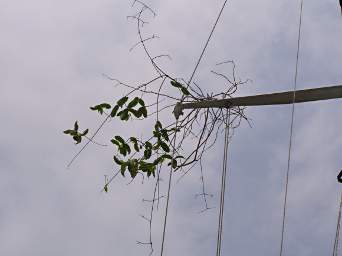 |
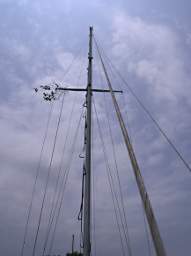 |
| Vines In Spreaders | Vines In Spreaders |
The wind continued to pick up, and we had no more problems. By the time we reached Livingston there was a good breeze blowing.
I discovered that not only would the engine not start, but the frig was cycling on and off, a sign that the batteries were weak. It cuts out automatically if there is not enough current or the voltage drops too far. I checked the specific gravity of the battery fluid and all cells seemed fine. I cleaned the terminals, but they were fine also. I gave up, put the motor on the dink, and went ashore and checked out. It took longer than usual because the internet was down and we had to wait for the port captain. I was going to send an email to Dona and let her know what was going on but couldn't.
When I got back to the boat I hard wired the frig to the batteries but it still cut out, so the problem was definitely the batteries themselves. So I monitored the battery voltage as the frig went on and saw that it dropped to 8 volts! Yikes. So I looked at the individual batteries. The first of the two six volt batteries dropped from 6.35 to 2.2! The second battery was fine. So the question I had was, what does it mean if the specific gravity of the cells is good, but the voltage drops like that? I didn't have a clue, and I still don't.
I considered my options. I couldn't really sail back up the river until late the next day, and even then I would need a pretty good wind to make it past some of the places where the current was particularly strong. Livingston wasn't likely to have any really good batteries -- there are few cars and no roads out of the town. The fishing boats need service, but they may all get their batteries up in Fronteras. Besides, the next day was Saturday, and mostly just tourist places would be open. I went to bed thinking I may as well sail up to Placencia as originally planned, and buy a new battery there.
Some time in the middle of the night I woke up and realized that the collectivos go back and forth all day between Livingston and Fronteras. If I could catch an early collective up to Fronteras, I could buy a battery and then get back down here by noon.
I was at the Livingston quay bright and early, and inquired about a boat to Fronteras. The first one wasn't until 09:00. The price was 125Q Q one way, 200 Q round trip -- but the round trip price was only good if you came back with the guy you went up with, and that meant waiting until 15:00 in the afternoon to return. Grrr... Or I could charter a private collectivo, for a whopping 1200 Q. Frustrated, I walked over to the fuel dock where my dinghy was tied up. A Mayan family was heading back up the river and I asked them if they were going to Fronteras, but they were only going part way up. But a man in a lancha a few boats over nodded his head at me, and when he worked his way over for fuel he said he had a fast boat and was going and would take me for 70 Q. Boy, did he have a fast boat! In 40 minutes we were at the bridge. I had to wait for the shop to open, but by 08:10 I had a new Delco deep cycle battery. I had to wait until 09:30 to get a collectivo down the river, and it was a slow trip. We stopped at all the tourist traps on the river -- we went up to the castle, stopped at bird island, stopped to buy trinkets from some local kids, and stopped at the hot spring for lunch and a dip. It was 11:30 by the time I hopped off in Livingston with my new battery.
I wired up the new battery, tidied up the boat, and was heading out to cross the bar by 13:30. It was way too late to be starting, and the wind was on the nose, but I was off at last. I was looking forward to a few relaxing weeks sailing, snorkeling and diving in Belize.
 |
| Leaving Guatemala, Heading for Belize |